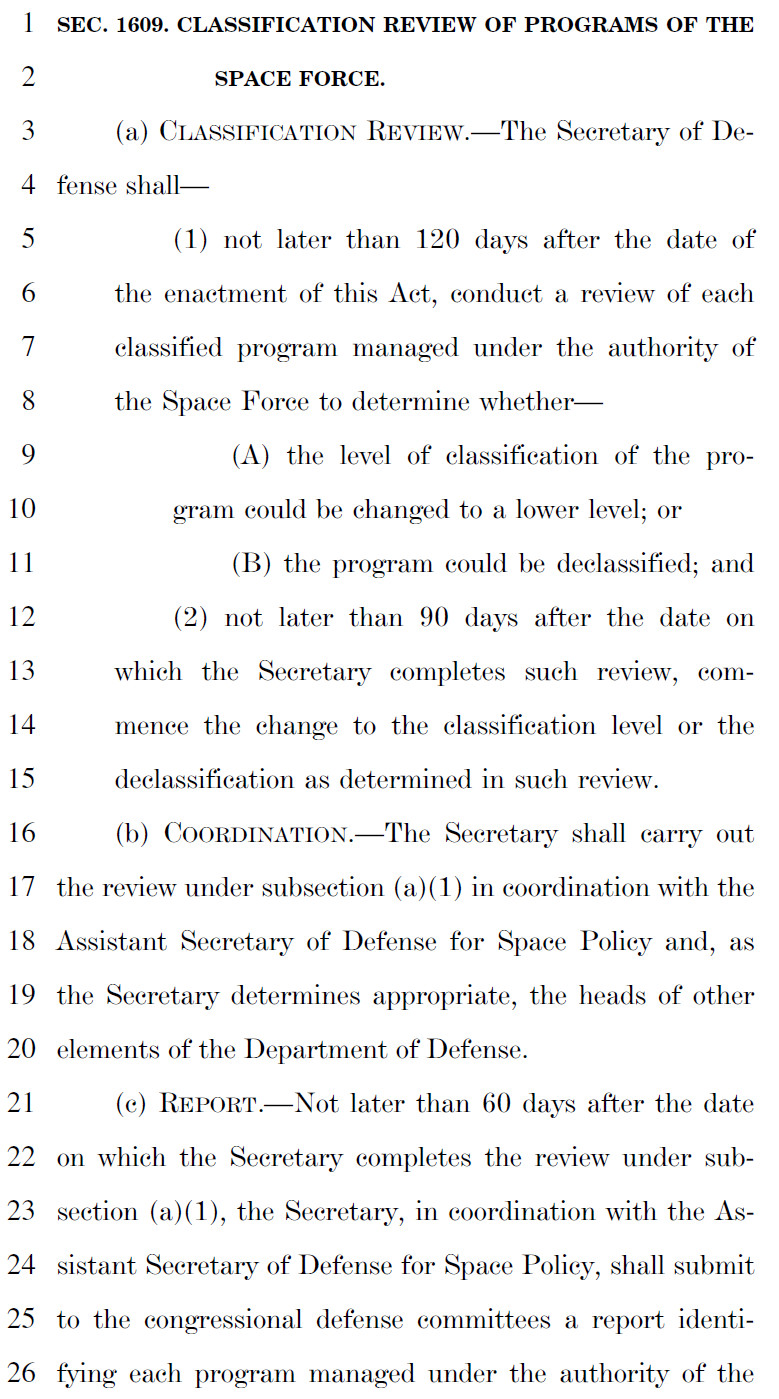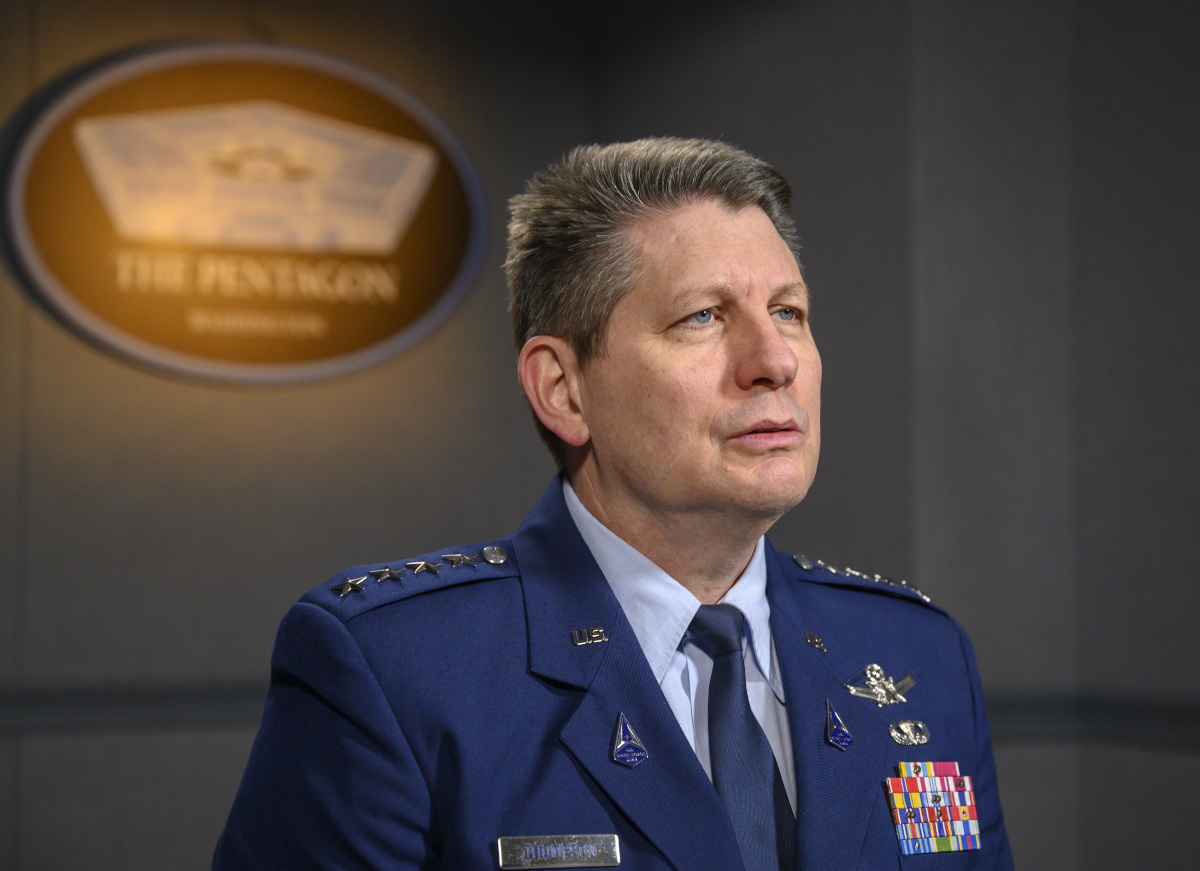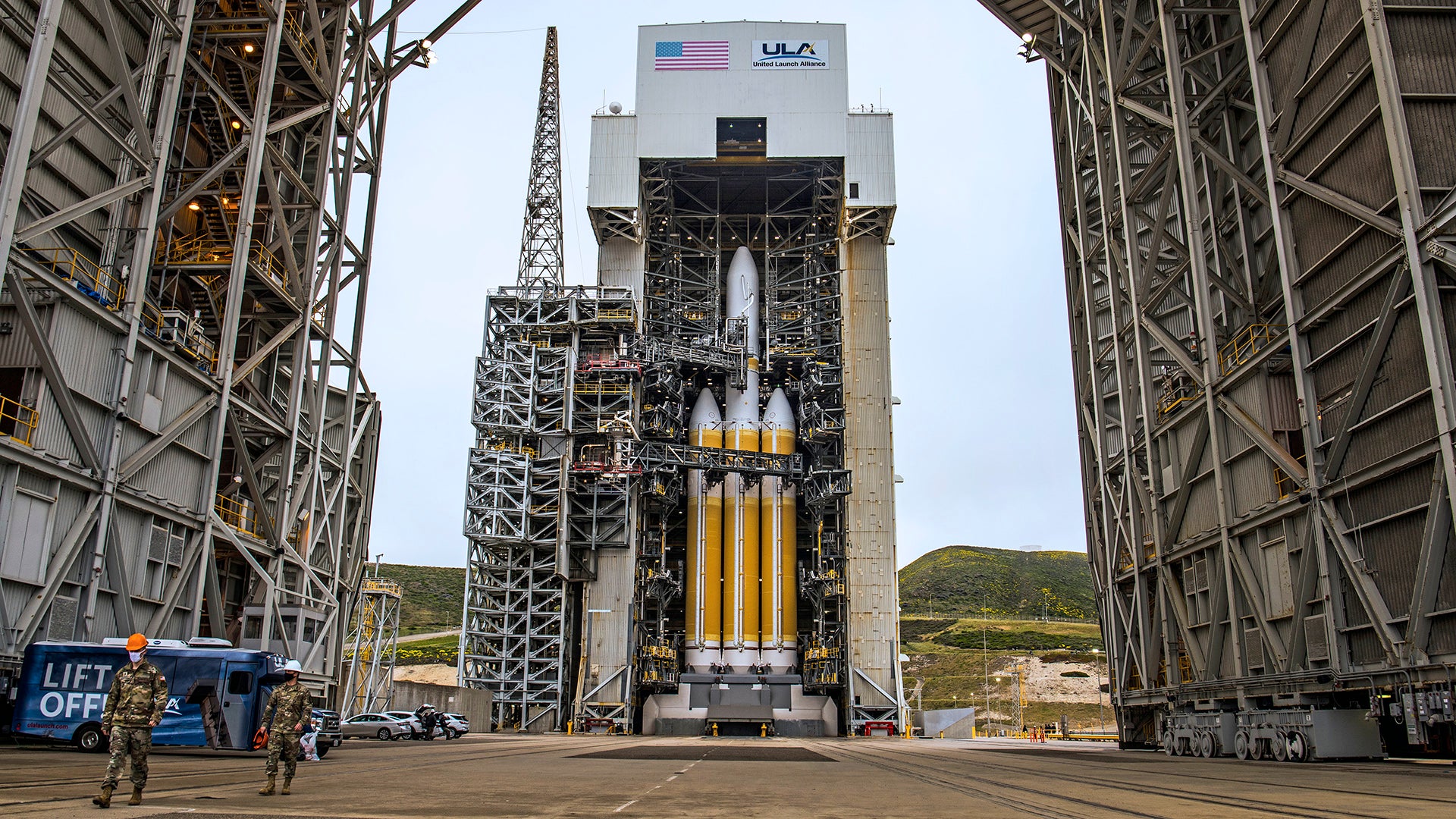The latest draft of the annual defense policy bill, or National Defense Authorization Act, for the 2022 Fiscal Year includes a provision that would require the Pentagon to conduct a declassification review of every classified program that the U.S. Space Force is presently managing. Much of the U.S. military’s space-related activities are highly classified, which has often made it difficult for officials to publicly discuss what they are doing now and advocate for increased funding and other support for new and improved capabilities. The disclosure of certain capabilities, even in part, could also help deter attacks on American assets in orbit, which a senior Space Force officer recently revealed are happening “every single day.”
The House and Senate Armed Services Committees announced they had finished work on the latest version of the Fiscal Year 2022 National Defense Authorization Act (NDAA) yesterday. The proposed bill includes various compromises that those Committees are hopeful will finally lead to its passage in the Senate, after which it would head to President Joe Biden’s desk where he would decide to either sign it into law or veto it.
Section 1609 of this new draft NDAA calls for the Secretary of Defense to, “not later than 120 days after the date of the enactment of this Act, conduct a review of each classified program managed under the authority of the Space Force” to see if the classification level of any of those programs could be lower or if they could be declassified entirely. Then, “not later than 90 days after the date on which the Secretary completes such review, commence the change to the classification level or the declassification as determined in such review.”


The Secretary of Defense, currently Lloyd Austin, would be instructed to conduct those reviews together with the Assistant Secretary of Defense for Space Policy and any other elements of the Department of Defense he deems appropriate. The House and Senate Armed Services Committees would also receive reports on the Pentagon’s proposed actions, its timeline for actually carrying out any changes to the levels of the classification of any Space Force programs, and a discussion of the potential security risks resulting from those decisions.
It is, of course, important to note that there is no requirement here to actually declassify anything. However, U.S. military officials and members of Congress have been increasingly pushing for reducing the level of classification surrounding American space-based and related capabilities in recent years for a number of reasons.
One immediate benefit from reducing the levels of classification surrounding U.S. military activities in or related to space would simply be the ability of the Space Force to just be more open about what it does. While there is certainly a need for operational security to help the U.S. military maintain its competitive edge in space, classified programs typically cover higher-end, often expensive capabilities where extreme secrecy can just as often limit their impact as help it depending on the exact circumstances. Beyond that, less classification would allow the Space Force to better promote its mission and otherwise advocate for itself publicly, which could help with recruitment and securing funding for priority projects.
Even before Space Force was formally established last year, U.S. Air Force officials had lamented how the many layers of secrecy made it difficult to just talk publicly about space-related activities and the ever-growing national security issues facing the United States outside the Earth’s atmosphere.
“The lack of an understanding really does hurt us in doing things that we need to do in space,” then-Secretary of the Air Force Barbara Barrett said back in December 2019. “There isn’t a constituency for space even though almost everyone uses space before their first cup of coffee in the morning.”

The U.S. military today is heavily reliant on space-based platforms for early warning, intelligence-gathering, navigation and weapon guidance, communications and data-sharing, and more.
“As members of the Armed Services Committee and the defense appropriators, we get it. But we have to have our other colleagues in the Congress to be supportive of us making the changes we need and the resources we need into this,” Representative Mike Rogers, an Alabama Republican and one of the Space Force’s most outspoken advocates, had said while speaking alongside Barrett two years ago. “It’s not going to happen until they understand the threat and the dependence we have. And I don’t think that can happen until we see significant declassification of what we’re doing in space and what China and Russia are doing, and how space is in their day-to-day lives.”
How the high degree of classification surrounding space-based and related capabilities impact public discussions of the potential threats assets in orbit is an important issue at play here. Russia and China in particular have fielded various anti-satellite capabilities and are in the process of developing more. These include, but are not limited to terrestrial anti-satellite interceptors, directed energy weapons that can at least disrupt the functioning of certain kinds of satellites, and on-orbit systems. The latter category consists of so-called “killer satellites,” which are small types capable of maneuvering close to their targets in space and then attacking them in various ways, such as firing projectiles or even just simply trying to smash into them.

These threats are not only real – Russia just destroyed a defunct spy satellite with a ground-based interceptor in a test in November – at least some of them are being regularly employed against American assets in space already. U.S. Space Force Gen. David Thompson, who is Vice Chief of Space Operations, the service’s second in command, revealed that U.S. government satellites are facing “reversible attacks” from Russia and China on a daily basis in an interview with The Washington Post‘s Josh Rogin in November. Reversible attacks are not intended to permanently damage a satellite and include things using lasers to blind optics or electronic warfare jamming.

The inability of the Air Force in the past, and now the Space Force, to talk openly about its ability to detect and respond to those threats has long presented a challenge when it comes to deterring those kinds of malign activities.
“It’s not enough to stand in the ring and take punches,” then-U.S. Air Force Chief of Staff General David Goldfein said in 2019 at the Space Foundation’s 35th annual Space Symposium. “You have to have the will and capability to punch back.
“There may come a point where we demonstrate some of our capabilities so that our adversaries understand they cannot deny us the use of space without consequence,” then-Secretary of the Air Force Heather Wilson had said at that same symposium. “They need to know there are certain things we can do, at least at some broad level, and the final element of deterrence is uncertainty. How confident are they that they know everything we can do? Because there’s a risk calculation in the mind of an adversary.”
As The War Zone has explored in-depth in the past, public information about the U.S. military’s so-called “counter-space” capabilities and its capacity to wage what has been more recently termed “orbital warfare” remains extremely limited. The Space Force officially acknowledges having only one counter-space capability in service now, a ground-based electronic warfare system called the Counter Communications System (CCS), but there are others in the classified realm.

“The only two things you told me about the U.S. ability to fight in space, are the ability to maneuver your satellites and to jam other satellites. Is that it?” CBS News’ David Martin asked Air Force Gen. John Hyten, then head of Air Force Space Command, in 2015 in an interview for “60 Minutes.”

“That’s not it, but that’s all I can tell you,” Hyten, who just recently retired from his last posting as Vice Chairman of the Joint Chiefs of Staff, had responded.
The issues of over-classification are not limited to the programs that Space Force manages, though they present particularly good examples, Officials have made clear in the past that this is a U.S. military-wide problem.
“In many cases in the department [of Defense], we’re just so overclassified it’s ridiculous, just unbelievably ridiculous,” Gen. Hyten said last year. “We have got to push down the classification to where it makes sense.”
If this new version of the 2022 Fiscal Year NDAA is ultimately signed into law, we may begin to learn a host of all-new details about the U.S. military’s space-based capabilities in the new year.
Contact the author: joe@thedrive.com
